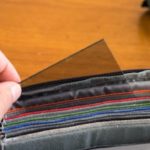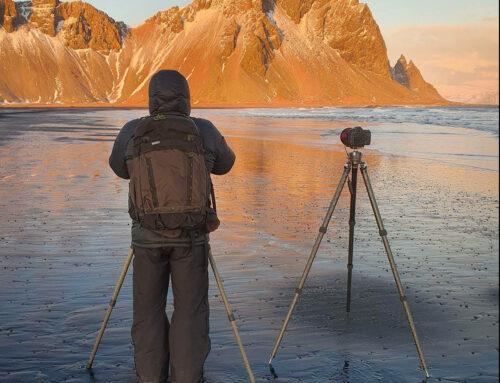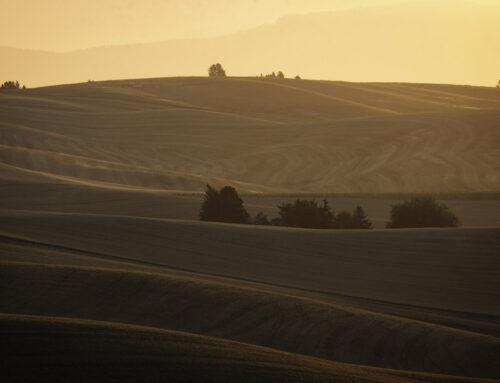One of the questions I get asked a lot is if I still use filters when I shoot. My answer is always a very quick “Yes I most certainly do!” “And I’m going to continue using them for the foreseeable future”
Many of the younger photographers ask why? In this age of bracketing for exposure, WB, aperture, HDR, EDR, Photoshop, Lightroom, Topaz, Nik, etc etc etc, why do I go to the trouble of messing with filters?
The answer is two-fold and it’s pretty simple……1) if you can get it right in camera in one frame, then your final output will be that much better and 2) I’d much rather be out in the field “messing” with filters than sitting at home in front of my computer messing with blending tons of shots together. And, I think I’m a bit of a purist…notice the key words in #1, “in one frame”. I enjoy the skill and artistry in working to capture an image in one frame, as I see it…not forcing it through digital chemistry. I don’t mind those who do, I just have a bit of a different approach.
I don’t use a ton of different filters as I’ve been able to pare down what i use to the essentials to “get it right in camera” All of my filters store neatly in one pouch that fits easily in my backpack and can be hung on belt loop as I’m shooting for quick and easy access. The pouch I’m using right now, which i really like, is the Mindshift Filter Hive. It has padded sleeves for 8 rectangular filters and 6-9 slots for round filters, all in a handy zippered pouch.
Shown above is the filter holder insert. Well constructed, color coded tabs for quick identification.
Here’s a quick overview of the filters I use in the field. Generally in order of most frequently used to least frequently used
Polarizers
In the Pacific Northwest, polarizing filters are a must have. They work great at cutting the glare coming off the water or rain on the foliage. There is nothing you can do in post-processing that will fix an image with lots of glare. The only solution is using a polarizing filter at the time of image capture.
I primarily use Singh-Ray filters as I’ve found them the highest quality with best performance and the least amount of color cast. It’s a 77mm thread size and I use step up/down rings for whichever lens I need it on. I also have a smaller B+W filter for use with my macro lens. If you’re in the market for one, only get a “circular” polarizer.
Graduated Neutral Density Filters
I regularly use Graduated Neutral Density (GND) filters during sunrise and sunset shoots when I want to even out the exposure across the scene. Usually the sky is bright and the foreground is much darker, so using one of these filters I can better even out the exposure across the entire scene.
I started with Lee filters and then a few years ago I transitioned to Singh-Ray due to the higher quality and no color cast. I’ve used the 4″x6″ size since I started to ensure that I have good side to side coverage even when using ultra-wide angle lenses.
The reason they are called “Graduated” is that the tint only covers part of the filter….it transitions from clear to the full strength of the gradient. There are two types of graduation, Hard and Soft. Hard filters have a very defined, hard line of transition. The Soft filters have a much more gradual transition.
Hard GNDs
Here you can see the very hard transition line between clear and the full darkness of the filter. These are best used when you have a well defined horizon line such as shooting an ocean scene.
Soft GNDs
Here you can see a very gradual, “soft”, transition between clear and the full darkness of the filter. These are best used when you have an uneven horizon line.
Reverse GNDs
These are a bit more specialized in that as you move from the clear section, there is a hard horizon line, then the full darkness, then near the top it lightens up a bit. These are great when you have a well defined horizon line, the sun is low in the sky and you want to retain some more exposure higher up in the sky. Think of the time right before sunset along the coast with nice clouds in the sky. You need to knock back the brightness of the sun, yet you don’t want to completely knock back the clouds up above.
Most of these filters are offered in 2,3,4 stops of light reduction at the full strength.
To hold these filters I use a Lee filter holder and a modified quick on/off ring to attach it whichever lens I’m working with.
Neutral Density Filters
Sometimes you want to knock back the light entering the camera across the entire scene in order to achieve longer shutter speeds. I use these types of filters when I really want to blur the water or when I want to create long exposures to add drama to the scene, such as the clouds streaking across the sky. I bring two different ones with me…
This is an adjustable ND filter, allowing me to dial in 2-8 stops of light reduction in order to achieve the shutter speed I want. It’s a little thick and some vignetting can occur at super wide angles, but the flexibility it brings far outweighs any shortcomings.
This bad boy knocks down 10 stops of light! With this much light reduction, I don’t use it all that often, but when I do……nice! The effects you can create with longer shutter speeds can sometimes only be achieved with such a filter. When you have this on your lens, you can’t see the image through the viewfinder (typically) because it’s too dark, so you need to compute an approximate shutter speed and then work your way into the right speed for a proper exposure. It’s a speciality item, but one that is always a “must bring” for me.
Well there you have it, a quick run down of all of the filters I continue to use in the field. If you have any questions please add a comment to the blog or drop me an email at john@jpedersenphotography.com
(originally published 4/10/17)













[…] GND filters are still an essential piece of kit to have with you in the field. Yes, you bracket your shots and/or do other steps in post processing, however I still firmly believe that it’s best to “get it right” in camera as much as possible. Better quality files and less time spent at the computer mashing together multiple frames to make one good one. I still carry a small quiver of filters (polarizer, 10 stop ND, and GND filters both hard and soft transitions) If you want to read my blog post about my filter assortment, check it out HERE […]